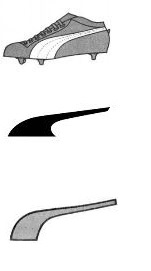Trademark agency Abcor - protect your trademark
Contact
If you have questions or want to know more about our services?Please mail: info@abcor-ip.com
Please call: 31 (0)71 576 3116
The use of the name GIRAFNOOTJES is not deemed a trademark infringement. Conceptually, the trademarks are similar. A tiger and a giraffe are both wild exotic animals with spotted skins. However, the words TIGER and GIRAF differ sufficiently, both visually and phonetically. Also the packaging does not infringe. The situation is different for the nuts, they are identical. The registered trademarks for the nut is a position trademark and it is valid. As of 1 March 2019 new legislation came into force by which these trademarks are protected, but GIRAFNOOTJES cannot invoke this because the trademarks of Frito-Lay are older. As a result GIRAFNOOTJES in this colour are banned. (source image; Abcor)
trademarks
